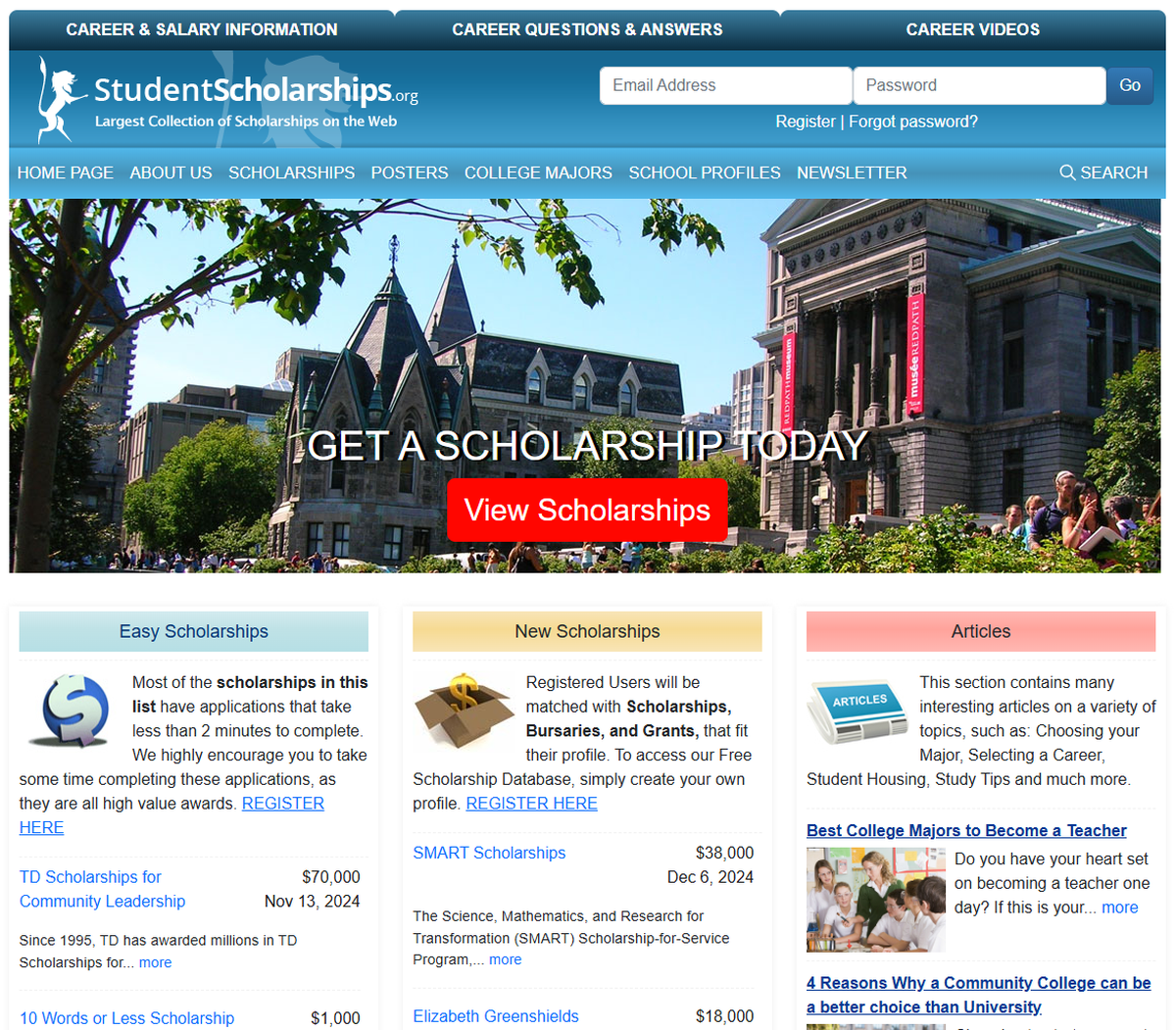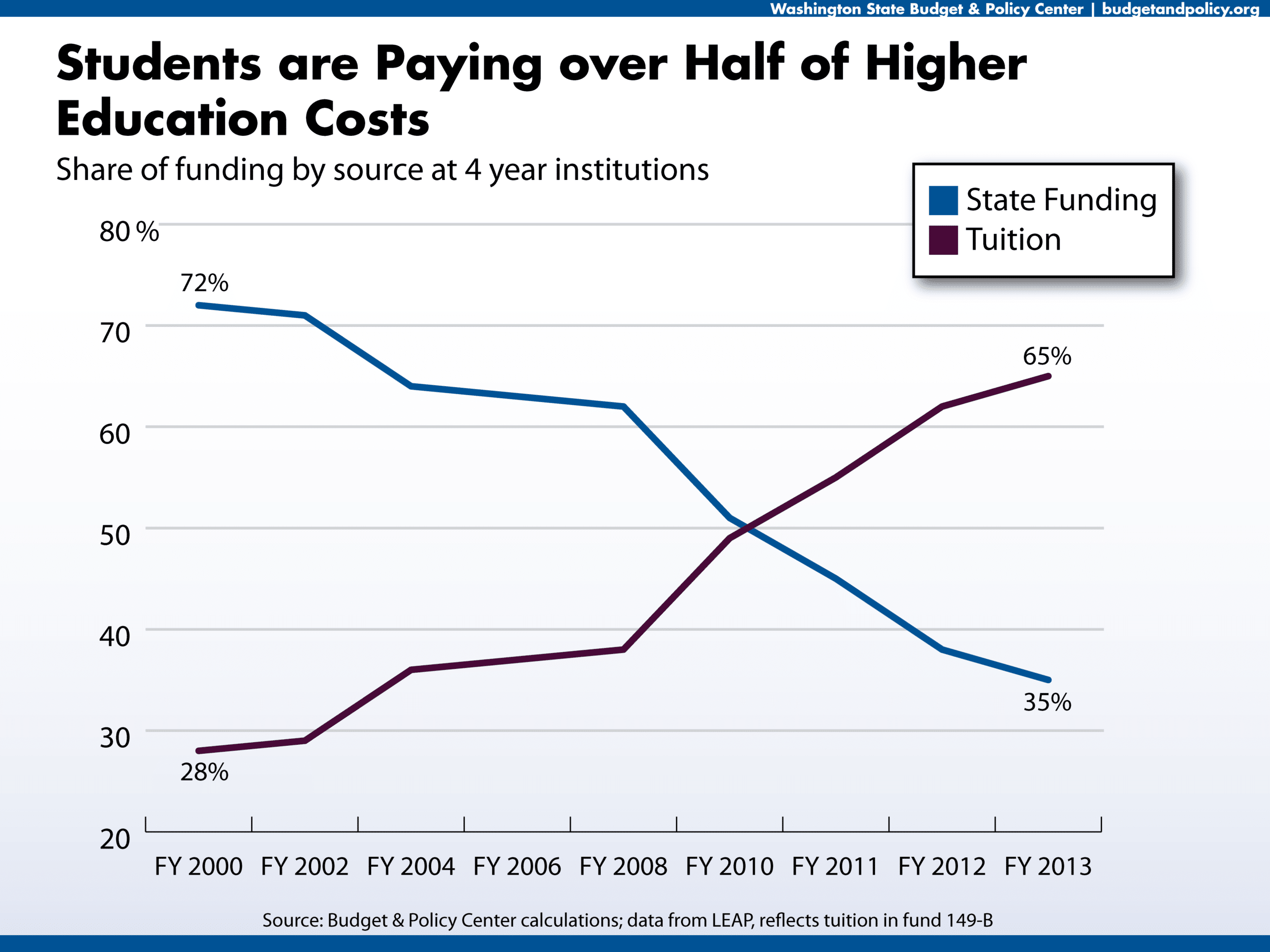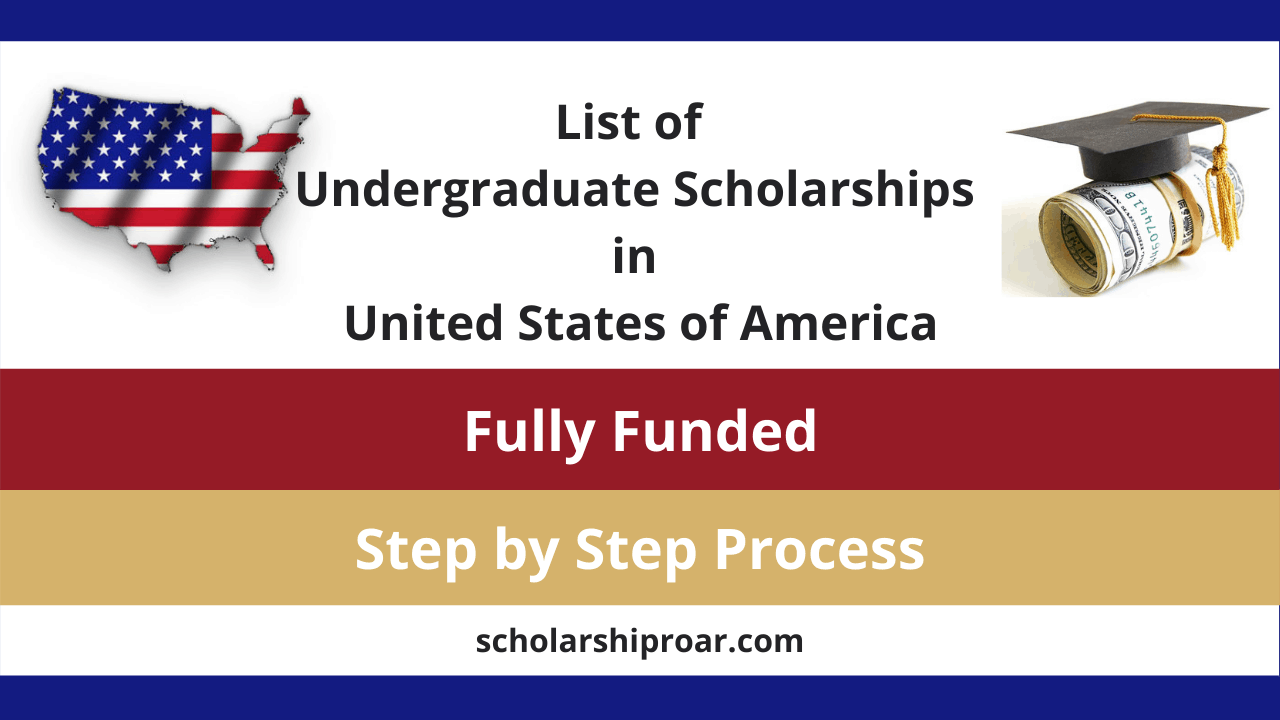Scholarships for Students with Disabilities
Scholarships for students with disabilities represent a vital bridge to higher education, leveling the playing field and empowering individuals to pursue their academic dreams. These scholarships not only provide financial assistance but also foster inclusivity and recognize the unique talents and potential of students with diverse abilities. This exploration delves into the various types of scholarships available, the application process, and the crucial role these opportunities play in academic success and overall well-being.
Securing funding for higher education can be challenging for anyone, but for students with disabilities, it can present even greater hurdles. Navigating the complexities of financial aid, understanding eligibility requirements, and overcoming accessibility barriers in the application process require careful planning and resourcefulness. This guide aims to illuminate the path, offering practical advice and valuable resources to help students with disabilities find and successfully apply for scholarships that can transform their educational journey.
Types of Scholarships for Students with Disabilities
Securing higher education can present unique challenges for students with disabilities. Financial constraints often exacerbate these difficulties. Fortunately, numerous scholarships specifically designed to support students with disabilities are available, easing the financial burden and promoting accessibility. These scholarships recognize the diverse needs and talents within this student population.
Categorization of Scholarships Based on Disability Type
Many scholarships are designed to support students with specific disability types. However, some are more broadly inclusive, catering to students with a range of disabilities. The following table provides examples, keeping in mind that specific scholarship offerings and eligibility criteria vary from year to year and by institution. Always consult the individual scholarship provider’s website for the most up-to-date information.
| Category | Scholarship Name Examples | Funding Amount Range | Application Requirements Summary |
|---|---|---|---|
| Physical Disabilities | American Association of People with Disabilities (AAPD) Scholarships, Scholarships from organizations supporting specific conditions (e.g., Muscular Dystrophy Association) | $500 – $10,000+ | Vary widely; often include essays, transcripts, letters of recommendation, and documentation of disability. |
| Learning Disabilities (e.g., dyslexia, ADHD) | Understood.org Scholarships, National Center for Learning Disabilities (NCLD) Scholarships | $1,000 – $5,000+ | Typically require diagnostic documentation of learning disability, academic transcripts, and personal essays demonstrating the impact of the disability and academic goals. |
| Mental Health Conditions (e.g., anxiety, depression) | Scholarships offered through mental health advocacy organizations (specific examples vary and are less commonly publicized than others), Some general disability scholarships may include students with mental health conditions. | $500 – $2,000+ (often smaller awards) | May require documentation from a mental health professional, along with standard academic requirements. Eligibility criteria often focus on the impact of the condition on academics and the student’s perseverance. |
| Visual Impairments | Scholarships from organizations like the American Foundation for the Blind (AFB), Scholarships offered through universities with programs for students with visual impairments. | $1,000 – $5,000+ | Usually require documentation of visual impairment, academic transcripts, and may include additional requirements related to assistive technology use or specific skills. |
| Auditory Impairments | Scholarships offered by organizations supporting the deaf and hard of hearing community, Scholarships from universities with programs for deaf and hard of hearing students. | $500 – $3,000+ | Similar to visual impairment scholarships, documentation of hearing loss and academic records are essential, potentially including information on communication methods and assistive technologies. |
Eligibility Criteria for Scholarships for Students with Disabilities
Eligibility criteria vary significantly depending on the specific scholarship. Common requirements include:
* Documentation of Disability: Most scholarships require official documentation from a qualified professional (e.g., doctor, psychologist, educational specialist) verifying the disability.
* Academic Performance: A minimum GPA is often required, demonstrating academic capability.
* Financial Need: Some scholarships prioritize students with demonstrated financial need, requiring submission of FAFSA information or other financial documentation.
* Essay or Personal Statement: Many applications require an essay or personal statement describing the applicant’s experiences with their disability, academic goals, and how the scholarship would impact their education.
* Letters of Recommendation: Letters of recommendation from teachers, counselors, or other professionals who can attest to the applicant’s abilities and character are often requested.
Examples of Organizations Offering Scholarships for Students with Disabilities
Several organizations actively support students with disabilities through scholarship programs. These organizations often have varying eligibility criteria and award amounts. Examples include:
* The American Association of People with Disabilities (AAPD): Offers a range of scholarships for students with disabilities.
* The National Center for Learning Disabilities (NCLD): Provides scholarships specifically for students with learning disabilities.
* The American Foundation for the Blind (AFB): Offers scholarships to students who are blind or visually impaired.
* Understood.org: Offers scholarships and resources for students with learning and attention issues.
* Many universities and colleges: Individual institutions often have their own scholarship programs specifically designed for students with disabilities. It’s essential to check with the financial aid offices of the schools you are applying to.
Finding and Applying for Scholarships
Securing financial aid is crucial for many students with disabilities, and scholarships represent a significant opportunity. This section details how to effectively locate and apply for scholarships designed to support students like you. A systematic approach increases your chances of success.
Locating Relevant Scholarships
Finding the right scholarships requires a proactive and organized search. Begin by identifying your specific needs and circumstances, such as your disability type, academic major, and geographic location. This focused approach helps refine your search and maximizes your chances of finding suitable opportunities. Next, utilize various search strategies, including online databases, disability-specific organizations, and your college’s financial aid office. Remember to check eligibility requirements carefully before investing time in an application.
Common Application Requirements and Effective Completion
Most scholarship applications share common requirements, including a completed application form, transcripts, letters of recommendation, and essays. Application forms usually request personal information, academic history, and extracurricular activities. Transcripts provide a record of your academic performance. Letters of recommendation showcase your character and abilities from trusted individuals. Essays allow you to highlight your personal narrative, goals, and how the scholarship will benefit you. To complete these effectively, proofread carefully, tailor your responses to each scholarship’s specific requirements, and request recommendations well in advance. Strong essays demonstrating genuine passion and a clear understanding of the scholarship’s purpose significantly improve your chances.
Checklist of Documents Typically Needed for Scholarship Applications
- Completed Application Form
- Official Transcripts (High School and/or College)
- Letters of Recommendation (typically 2-3)
- Personal Essay or Statement of Purpose
- Resume or Curriculum Vitae (CV)
- Proof of Disability (if required by the specific scholarship)
- Financial Need Documentation (if applicable)
- Identification Documents (e.g., driver’s license or passport)
Preparing these documents in advance simplifies the application process and ensures you meet deadlines. Keep organized digital and physical copies of all documents.
Resources for Searching Scholarships
Several online resources specialize in connecting students with scholarships. These platforms offer search filters to help narrow your search based on various criteria.
- Fastweb: A comprehensive database with numerous scholarships for students with disabilities.
- Scholars4dev: Focuses on scholarships for international students, including those with disabilities.
- Peterson’s: A well-known resource for college planning and scholarship searches.
- Your College or University’s Financial Aid Office: They often have a list of internal and external scholarships specifically for their students.
- Disability-Specific Organizations: Many organizations dedicated to supporting individuals with disabilities offer scholarships. Research organizations relevant to your disability.
Remember to regularly check these resources, as new scholarships are frequently added. Thorough research is key to uncovering the best opportunities.
Financial Aid and Disability Services
Securing funding for higher education is a significant hurdle for many students, and this challenge is often amplified for students with disabilities. Understanding the various financial aid options available, and how to effectively navigate the application process, is crucial for academic success. This section explores the landscape of financial aid, comparing scholarships with other options, and highlighting the vital role of disability services offices in supporting students.
Scholarships, grants, and loans represent the core pillars of financial aid for students with disabilities. While all aim to alleviate the financial burden of higher education, they differ significantly in their structure and requirements. Scholarships, as previously discussed, are typically merit-based or need-based awards that do not require repayment. Grants, similar to scholarships, are generally need-based and do not need to be repaid. Loans, however, require repayment after graduation, often with interest accruing over time. The availability and amounts of each vary depending on the institution, the student’s financial need, and their specific disability. A student might receive a combination of these funding sources to cover their educational expenses.
Comparison of Scholarships, Grants, and Loans
Scholarships, grants, and loans each offer distinct advantages and disadvantages. Scholarships often require a competitive application process, focusing on academic achievement, extracurricular activities, or specific talents. Grants are typically awarded based on demonstrated financial need, often requiring completion of the Free Application for Federal Student Aid (FAFSA). Loans, while readily available, place the student in debt after graduation, impacting their financial future. The ideal strategy often involves securing as much grant and scholarship funding as possible before resorting to loans. For instance, a student with a learning disability might receive a scholarship for students with disabilities, a Pell Grant based on their family income, and a small student loan to cover the remaining tuition and living expenses.
The Role of Disability Services Offices in Accessing Financial Aid
Disability services offices play a crucial role in guiding students through the financial aid process. These offices can provide information on scholarships specifically designed for students with disabilities, assist with completing financial aid applications, and advocate on behalf of students when necessary. They often possess specialized knowledge of resources and programs that may not be readily apparent to students. For example, they might be aware of lesser-known state or local grants for students with disabilities, or help students navigate the process of requesting reasonable accommodations related to their disability when completing the FAFSA. Furthermore, they can offer advice on budgeting and financial planning to help students manage their funds effectively.
Advocating for Oneself When Applying for Financial Aid
Successfully navigating the financial aid process often requires proactive self-advocacy. Students should meticulously gather all necessary documentation, including medical records, disability diagnoses, and supporting evidence for any claims of financial need. They should thoroughly research available scholarships and grants, ensuring they meet all eligibility requirements. When completing applications, students should clearly articulate their needs and how their disability impacts their ability to pursue higher education. Don’t hesitate to contact the financial aid office or disability services office for clarification or assistance with the application process. Proactive communication and well-prepared applications significantly increase the chances of securing financial support.
Impact of Scholarships on Students with Disabilities
Scholarships represent a transformative force in the lives of students with disabilities, significantly impacting their academic journeys and overall well-being. Access to higher education is often fraught with additional financial and logistical challenges for students with disabilities, and scholarships directly alleviate these burdens, fostering greater independence and success. The positive effects extend beyond mere financial assistance; they contribute to a sense of empowerment and belonging, vital for academic thriving.
Scholarships provide crucial financial support, enabling students with disabilities to focus on their studies rather than being overwhelmed by the weight of financial concerns. This reduced stress translates to improved academic performance, increased participation in extracurricular activities, and a more positive overall college experience. The financial assistance can cover tuition fees, books, assistive technology, transportation, and living expenses, all of which can be significantly higher for students with disabilities due to specialized needs.
Improved Academic Performance and Increased Opportunities
The impact of scholarships on academic success is undeniable. For instance, imagine Anya, a visually impaired student pursuing a degree in computer science. A scholarship enabled her to purchase specialized software and hardware, allowing her to fully participate in her coursework and excel in her studies. Without this financial aid, Anya might have struggled to access the necessary technology, potentially hindering her academic progress. Similarly, scholarships can fund specialized tutoring or mentoring programs tailored to the unique learning styles and needs of students with disabilities. This individualized support significantly boosts their confidence and academic performance. Access to assistive technologies, like screen readers or speech-to-text software, is often expensive, and scholarships can bridge this financial gap, enabling students to fully engage with their educational materials.
Enhanced Well-being and Sense of Belonging
Beyond academic achievements, scholarships contribute to the overall well-being of students with disabilities. The reduction in financial stress leads to less anxiety and improved mental health, allowing students to focus on their personal growth and development. Receiving a scholarship can also boost self-esteem and foster a sense of belonging within the academic community. Consider the case of David, a student with autism spectrum disorder who received a scholarship to attend a prestigious university. The scholarship not only covered his tuition but also provided funding for social skills training and peer mentorship. This support helped David navigate the social complexities of university life, fostering a sense of inclusion and connection. The financial security provided by the scholarship allowed David to focus on his studies and develop meaningful relationships, leading to a more positive and fulfilling college experience.
Overcoming Financial Barriers to Education
Many students with disabilities face significant financial barriers to higher education. The costs associated with assistive technologies, specialized accommodations, and transportation can be prohibitive, often exceeding the resources available to families. Scholarships act as a vital safety net, enabling students to pursue their educational goals without being burdened by insurmountable debt. For example, consider Maria, a student with a mobility impairment who required specialized transportation to attend college. A scholarship covered the costs of accessible transportation, enabling her to attend classes and participate in campus activities. Without this financial support, Maria would have been unable to access higher education, significantly limiting her future opportunities. Scholarships directly address these financial challenges, creating pathways to educational success for students who might otherwise be excluded.
Accessibility and Inclusivity in Scholarship Applications
Ensuring equitable access to scholarship opportunities for students with disabilities is crucial for fostering a truly inclusive higher education system. Many barriers exist within the application process itself, preventing qualified candidates from even being considered. Addressing these barriers requires a multifaceted approach encompassing application design, review procedures, and overall institutional commitment.
Potential Accessibility Barriers in Scholarship Applications
The application process for scholarships can present numerous challenges for students with disabilities. These barriers can range from inaccessible online forms and document submission requirements to biased assessment criteria and a lack of support during the application process. For example, a visually impaired student might struggle to navigate a website lacking sufficient screen reader compatibility, while a student with a motor impairment might find it difficult to complete online forms requiring precise mouse control. Similarly, applications requiring extensive writing samples might disproportionately disadvantage students with dyslexia or other learning disabilities. Furthermore, a lack of clear communication about accessible application options can exclude many potential applicants.
Methods for Improving Accessibility of Scholarship Applications
Several strategies can significantly improve the accessibility of scholarship applications. Utilizing accessible online application platforms compatible with assistive technologies like screen readers and speech-to-text software is paramount. This includes ensuring proper alt text for images, clear and consistent formatting, and keyboard navigation functionality. Offering alternative submission methods, such as accepting audio or video recordings instead of written essays for students with writing difficulties, demonstrates a commitment to inclusivity. Providing clear and concise instructions, using plain language, and offering applications in multiple formats (e.g., large print, Braille) further enhance accessibility. Finally, ensuring that the application review process itself is accessible and considers the needs of applicants with disabilities is vital.
Recommendations for Scholarship Providers to Enhance Inclusivity
Scholarship providers should actively prioritize accessibility and inclusivity in their application processes. This includes conducting regular accessibility audits of their online applications and supporting materials. They should consult with disability advocacy groups and students with disabilities to gain valuable insights and ensure that their applications meet diverse needs. Furthermore, providers should train staff on how to effectively review applications from students with disabilities, avoiding bias and focusing on the applicant’s skills and potential. Finally, providing clear and accessible information about disability services and support available throughout the application process fosters a welcoming and inclusive environment. Transparent communication about accessibility features and alternative submission options ensures that all qualified students have the opportunity to apply.
Illustrative Examples of Scholarship Programs
Securing financial assistance is crucial for students with disabilities pursuing higher education. Many organizations recognize this need and offer scholarships specifically designed to support these students. The following examples showcase the variety of programs available and the impact they can have.
Understanding the specifics of each program – its focus, eligibility requirements, and application process – is key to successful application. This information allows students to target their efforts and maximize their chances of receiving funding.
The American Association of People with Disabilities (AAPD) Scholarship
The AAPD offers scholarships to students with disabilities pursuing higher education. These scholarships aim to assist students in overcoming financial barriers to access education and promote inclusivity within higher education institutions.
- Focus: Supporting students with disabilities pursuing undergraduate or graduate degrees.
- Eligibility Criteria: Applicants must be students with disabilities enrolled in or accepted into an accredited college or university, demonstrate financial need, and maintain a minimum GPA (specific GPA requirements vary each year).
- Application Process: Applications typically involve submitting an application form, transcripts, letters of recommendation, and an essay describing their disability, academic goals, and financial need. Deadlines vary annually.
The AAPD scholarship provides significant financial relief, allowing recipients to focus on their studies without the overwhelming burden of tuition and living expenses. The award allows recipients to dedicate more time to their academic pursuits and extracurricular activities, fostering personal and professional growth. Moreover, the scholarship provides a sense of community and belonging, knowing they are supported by an organization dedicated to their success.
The National Multiple Sclerosis Society (NMSS) Scholarships
The NMSS provides scholarships specifically for students with multiple sclerosis (MS). These scholarships acknowledge the unique challenges faced by students managing MS while pursuing their education.
- Focus: Supporting students with MS pursuing undergraduate or graduate degrees.
- Eligibility Criteria: Applicants must have a diagnosis of MS, be enrolled in or accepted into an accredited college or university, and demonstrate financial need. Additional criteria may include academic performance and community involvement.
- Application Process: Applicants usually need to submit a completed application form, medical documentation confirming their MS diagnosis, academic transcripts, and supporting documents demonstrating financial need. The application process often involves an essay component detailing their experiences and goals.
For students with MS, the financial assistance offered by the NMSS is invaluable. The scholarship significantly reduces the stress associated with managing both the demands of their illness and the financial burden of higher education. This allows recipients to focus on their treatment, maintain their well-being, and dedicate themselves fully to their studies, paving the way for a successful future despite their health challenges.
The Ernst & Young (EY) Disability Scholarship Program
EY’s program is designed to support students with disabilities pursuing degrees in business and related fields. The program reflects EY’s commitment to diversity and inclusion within the workplace.
- Focus: Supporting students with disabilities pursuing undergraduate or graduate degrees in business, accounting, finance, or related fields.
- Eligibility Criteria: Applicants must have a documented disability, be enrolled in or accepted into an accredited college or university, demonstrate academic excellence, and possess leadership qualities. Specific GPA requirements and other eligibility criteria are detailed on their website.
- Application Process: The application process usually includes submitting an application form, academic transcripts, letters of recommendation, and an essay highlighting their academic achievements, career aspirations, and experiences as a student with a disability. Applicants might also be required to participate in an interview.
The EY scholarship offers more than just financial aid; it provides recipients with invaluable networking opportunities within a leading professional services firm. This opens doors to mentorship, internships, and potential career paths after graduation, significantly enhancing their future prospects. The scholarship also demonstrates EY’s commitment to inclusivity, creating a supportive environment and fostering a sense of belonging for students with disabilities within the business world.
Final Wrap-Up
Ultimately, scholarships for students with disabilities are not merely financial aids; they are investments in human potential. By providing the necessary resources and fostering an inclusive environment, these programs empower students to overcome obstacles, achieve their academic goals, and contribute meaningfully to society. The journey to securing funding may require persistence and advocacy, but the rewards—both personal and societal—are immeasurable. We hope this overview has provided valuable insights and encouragement to all students with disabilities pursuing higher education.









